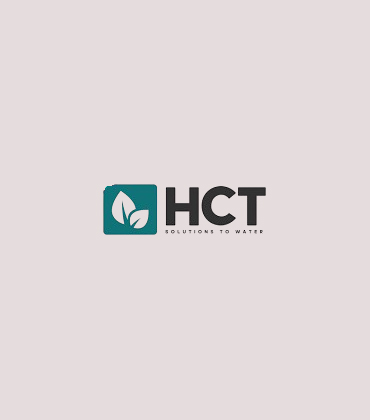Hard water, rising salinity, toxic buildup in the root zone, and fertilizer-packed soil that is no longer available to the plant are not surface-level problems. They are structural failures in how nutrients and biology interact beneath the surface. The deeper issue? Soils are no longer functioning as healthy, living filters. They’ve become clogged, compacted, and chemically imbalanced, suffocating the plant’s ability to take up what it needs. Standard fixes—pH adjustments, fertilizer top-ups, sulfuric acid, and gypsum treatments—offer only temporary improvement but often worsen the underlying conditions with every application, regardless of lowered pH.
HCT was founded to solve this—not just with another product, but with improved and enhanced water, bacteria, and soil testing methods, and with chemical solutions for water treatment and soil remediation that rely on ion exchange rather than mere pH suppression.
 Using advanced chemistry, biology, and soil physics, HCT helps growers and turf managers rehabilitate the soil’s ability to breathe, filter, and feed. It began with municipal water well treatments in California, then expanded into nurseries, agriculture, and turf, earning trust through clear data and measurable results. Today, HCT supports over 6 million acres of soil, including 340 golf courses and many of the country’s most water-stressed growing conditions across the USA.
Using advanced chemistry, biology, and soil physics, HCT helps growers and turf managers rehabilitate the soil’s ability to breathe, filter, and feed. It began with municipal water well treatments in California, then expanded into nurseries, agriculture, and turf, earning trust through clear data and measurable results. Today, HCT supports over 6 million acres of soil, including 340 golf courses and many of the country’s most water-stressed growing conditions across the USA.
“Hard water, bad water, reclaimed water, compromised soil—that’s all money waiting to be liberated for the grower at a positive ROI,” says Todd R. Eden, Principal of HCT.
The company’s science-backed approach uncovers what’s holding plants back, restores balance at the root level, and reduces dependence on costly inputs. It brings soil back to life through evidence, precision, and a program that works with nature, not against it.
The process begins with a full water analysis that includes bacterial data. HCT then examines the total soil profile—not just surface-level “exchangeable” nutrients—using total soil digestion tests that reveal the full load of fertilizer and salts that have accumulated, clogging pore space, turning soils septic, blocking root growth, and perpetuating disease. Most conventional testing methods overlook this; they measure only what’s available through root acid production. HCT identifies what’s trapped, how it’s trapped, and why roots fail to reach deeper zones. It also pinpoints areas where water collects and toxic salts form hidden layers. These zones often contain high levels of sodium, chloride, and detrimental biomatter. Roots avoid them, nutrition stays locked, and plants underperform.
Treatment uses chemistry—applied through water and directly to the soil—designed to unlock what the plant needs, making nutrients available in an ionic, drinkable form. This process makes existing fertilizers bioavailable, reducing the need for further fertilizer application in most cases. It also restores infiltration, allowing water to reach the full root zone and target depth. Once roots begin absorbing nutrient-rich, healthy water, plants recover and grow beyond expectations, as evidenced by tissue analysis. As the soil is remediated, the amount of chemistry required decreases, transitioning from corrective intervention to sustainable maintenance.
Across crops like nuts, berries, onions, garlic, cotton, and alfalfa, yield increases range from 18 percent to 70 percent. Golf greens, fairways, and nursery plants show similar responses. Water use drops by at least 15 percent, with some clients reporting reductions of up to 40 percent. The cost of a full treatment averages 30 cents for every dollar saved or recovered.
 HCT’s work stands in contrast to outdated solutions. Many growers still use sulfuric acid to break down soils. That creates short-term improvement but, over time, hardens the soil and causes deeper damage. Studies from institutions like UC Davis confirm this outcome. In direct A/B testing, HCT’s program consistently outperformed sulfuric acid in both immediate results and long-term soil recovery. Over three years, Universities studied HCT’s, ultimately validating its lasting effectiveness and prompting a broader shift in agronomic practices. Other sectors followed. Nut growers, garlic producers, and sports turf managers now rely on the same model.
HCT’s work stands in contrast to outdated solutions. Many growers still use sulfuric acid to break down soils. That creates short-term improvement but, over time, hardens the soil and causes deeper damage. Studies from institutions like UC Davis confirm this outcome. In direct A/B testing, HCT’s program consistently outperformed sulfuric acid in both immediate results and long-term soil recovery. Over three years, Universities studied HCT’s, ultimately validating its lasting effectiveness and prompting a broader shift in agronomic practices. Other sectors followed. Nut growers, garlic producers, and sports turf managers now rely on the same model.
HCT continues to grow through demand. It is expanding to support new partners in Mexico and preparing for global partnerships. The company is building systems that enable same-day responses without sacrificing accuracy. It prioritizes each case, knowing that every grower has only one season—and that season must succeed. HCT ensures that the water and soil make it possible.
HCT ensures that the water, delivered through the soil, gives the plant a healthy, nutrient-rich drink.
HCT was founded to solve this—not just with another product, but with improved and enhanced water, bacteria, and soil testing methods, and with chemical solutions for water treatment and soil remediation that rely on ion exchange rather than mere pH suppression.
 Using advanced chemistry, biology, and soil physics, HCT helps growers and turf managers rehabilitate the soil’s ability to breathe, filter, and feed. It began with municipal water well treatments in California, then expanded into nurseries, agriculture, and turf, earning trust through clear data and measurable results. Today, HCT supports over 6 million acres of soil, including 340 golf courses and many of the country’s most water-stressed growing conditions across the USA.
Using advanced chemistry, biology, and soil physics, HCT helps growers and turf managers rehabilitate the soil’s ability to breathe, filter, and feed. It began with municipal water well treatments in California, then expanded into nurseries, agriculture, and turf, earning trust through clear data and measurable results. Today, HCT supports over 6 million acres of soil, including 340 golf courses and many of the country’s most water-stressed growing conditions across the USA.“Hard water, bad water, reclaimed water, compromised soil—that’s all money waiting to be liberated for the grower at a positive ROI,” says Todd R. Eden, Principal of HCT.
The company’s science-backed approach uncovers what’s holding plants back, restores balance at the root level, and reduces dependence on costly inputs. It brings soil back to life through evidence, precision, and a program that works with nature, not against it.
The process begins with a full water analysis that includes bacterial data. HCT then examines the total soil profile—not just surface-level “exchangeable” nutrients—using total soil digestion tests that reveal the full load of fertilizer and salts that have accumulated, clogging pore space, turning soils septic, blocking root growth, and perpetuating disease. Most conventional testing methods overlook this; they measure only what’s available through root acid production. HCT identifies what’s trapped, how it’s trapped, and why roots fail to reach deeper zones. It also pinpoints areas where water collects and toxic salts form hidden layers. These zones often contain high levels of sodium, chloride, and detrimental biomatter. Roots avoid them, nutrition stays locked, and plants underperform.
-
Hard water, bad water, reclaimed water, compromised soil—that’s all money waiting to be liberated for the grower at a positive ROI
Treatment uses chemistry—applied through water and directly to the soil—designed to unlock what the plant needs, making nutrients available in an ionic, drinkable form. This process makes existing fertilizers bioavailable, reducing the need for further fertilizer application in most cases. It also restores infiltration, allowing water to reach the full root zone and target depth. Once roots begin absorbing nutrient-rich, healthy water, plants recover and grow beyond expectations, as evidenced by tissue analysis. As the soil is remediated, the amount of chemistry required decreases, transitioning from corrective intervention to sustainable maintenance.
Across crops like nuts, berries, onions, garlic, cotton, and alfalfa, yield increases range from 18 percent to 70 percent. Golf greens, fairways, and nursery plants show similar responses. Water use drops by at least 15 percent, with some clients reporting reductions of up to 40 percent. The cost of a full treatment averages 30 cents for every dollar saved or recovered.
 HCT’s work stands in contrast to outdated solutions. Many growers still use sulfuric acid to break down soils. That creates short-term improvement but, over time, hardens the soil and causes deeper damage. Studies from institutions like UC Davis confirm this outcome. In direct A/B testing, HCT’s program consistently outperformed sulfuric acid in both immediate results and long-term soil recovery. Over three years, Universities studied HCT’s, ultimately validating its lasting effectiveness and prompting a broader shift in agronomic practices. Other sectors followed. Nut growers, garlic producers, and sports turf managers now rely on the same model.
HCT’s work stands in contrast to outdated solutions. Many growers still use sulfuric acid to break down soils. That creates short-term improvement but, over time, hardens the soil and causes deeper damage. Studies from institutions like UC Davis confirm this outcome. In direct A/B testing, HCT’s program consistently outperformed sulfuric acid in both immediate results and long-term soil recovery. Over three years, Universities studied HCT’s, ultimately validating its lasting effectiveness and prompting a broader shift in agronomic practices. Other sectors followed. Nut growers, garlic producers, and sports turf managers now rely on the same model.HCT continues to grow through demand. It is expanding to support new partners in Mexico and preparing for global partnerships. The company is building systems that enable same-day responses without sacrificing accuracy. It prioritizes each case, knowing that every grower has only one season—and that season must succeed. HCT ensures that the water and soil make it possible.
HCT ensures that the water, delivered through the soil, gives the plant a healthy, nutrient-rich drink.
Thank you for Subscribing to Agri Business Review Weekly Brief



